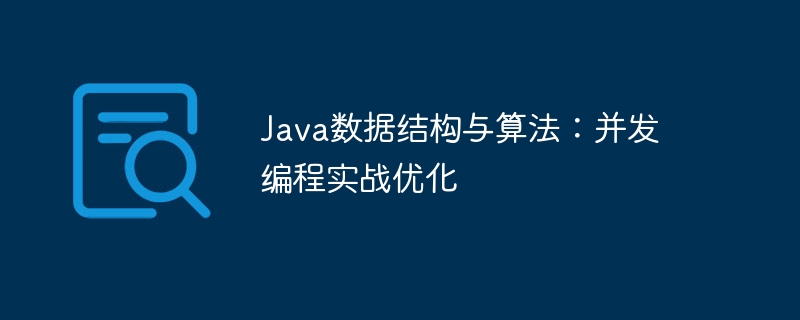Java資料結構與演算法:並發程式實戰優化
- 王林原創
- 2024-05-08 21:12:01781瀏覽
在 Java 中,並發程式設計透過並發資料結構和演算法來最佳化多執行緒應用程式效能:原子操作:使用原子變數(如 AtomicInteger)保證操作作為一個整體執行。並發資料結構:使用 ConcurrentHashMap、ConcurrentLinkedQueue 和 CopyOnWriteArrayList 等線程安全資料結構。鎖:利用 synchronized 和 Lock 介面保護臨界區代碼。

Java 資料結構與演算法:並發程式實戰最佳化
在多執行緒應用程式中,並發程式設計對於提高效能和響應能力至關重要。在 Java 中,我們可以使用並發資料結構和演算法來優化並發場景。
原子運算
原子運算確保一組運算會作為一個整體執行,或根本不執行。 Java 中的 AtomicInteger、AtomicReference 和 AtomicBoolean 等類別提供了原子變數。
AtomicInteger counter = new AtomicInteger(); counter.incrementAndGet();
並發資料結構
- #ConcurrentHashMap:一個執行緒安全的雜湊表,允許多個執行緒同時存取和更新。
- ConcurrentLinkedQueue:一個執行緒安全的佇列,支援多執行緒插入和刪除。
- CopyOnWriteArrayList:一個線程安全的列表,每次迭代都會建立列表的副本。
ConcurrentHashMap<String, Integer> map = new ConcurrentHashMap<>();
map.put("key", 10);鎖定
- synchronized:一個內建鎖定,可用來保護臨界區程式碼。
- Lock 介面:提供更細粒度的鎖定控制,例如可重入鎖定和讀取和寫入鎖定。
synchronized (lock) {
// 临界区代码
}實戰案例:並發計數器
#考慮一個需要對請求進行計數的 Web 應用程式。由於請求可能是並發發生的,因此需要一個線程安全的計數器:
import java.util.concurrent.atomic.AtomicLong;
public class Counter {
private AtomicLong count = new AtomicLong();
public long increment() {
return count.incrementAndGet();
}
public long getCount() {
return count.get();
}
}在increment() 方法中,我們使用AtomicLong 的incrementAndGet () 方法原子性地將計數增加1。在 getCount() 方法中,我們傳回計數的目前值。
透過使用並發資料結構和鎖定,我們確保在並發環境中應用程式的計數保持準確和一致。
以上是Java資料結構與演算法:並發程式實戰優化的詳細內容。更多資訊請關注PHP中文網其他相關文章!
陳述:
本文內容由網友自願投稿,版權歸原作者所有。本站不承擔相應的法律責任。如發現涉嫌抄襲或侵權的內容,請聯絡admin@php.cn

